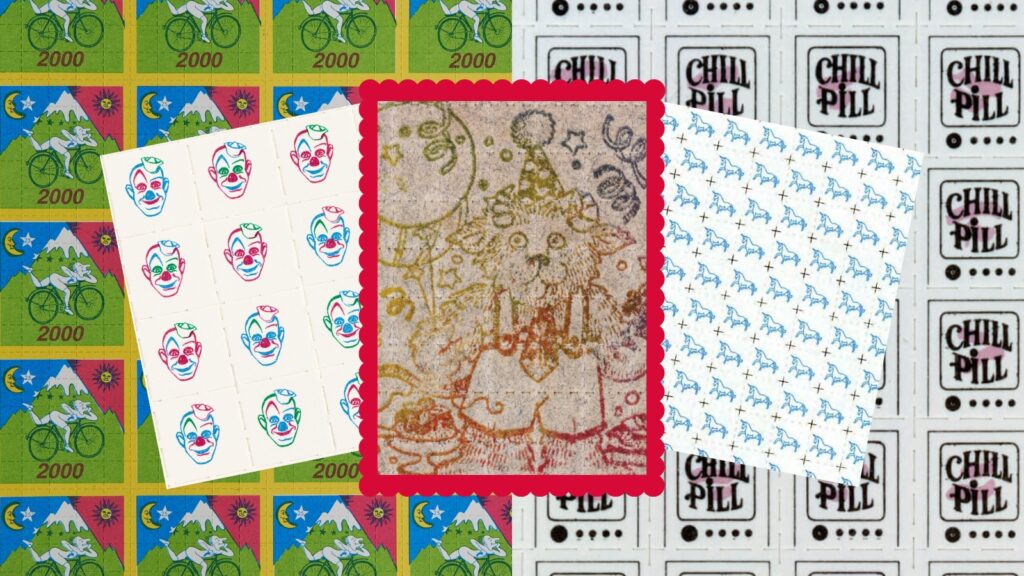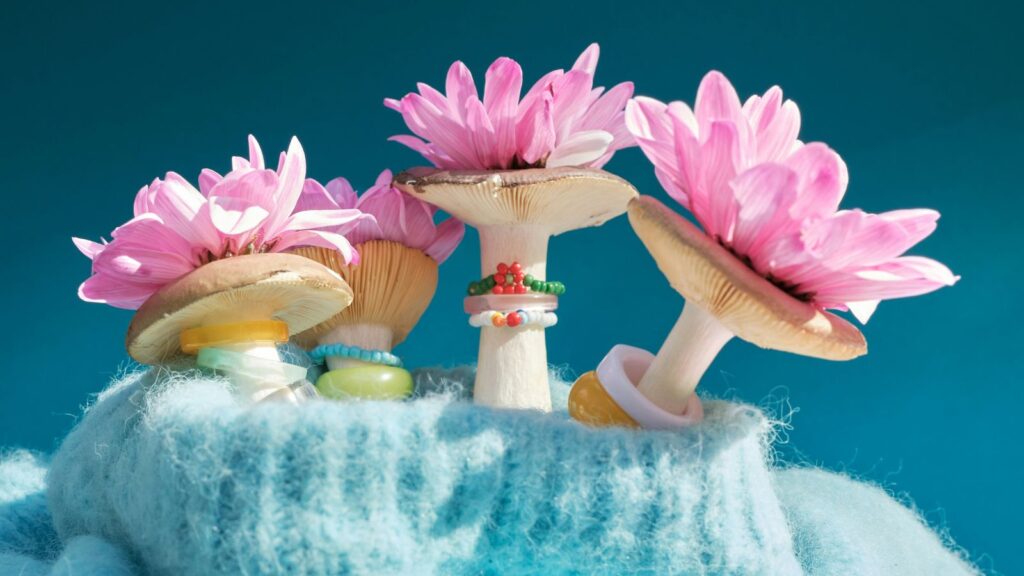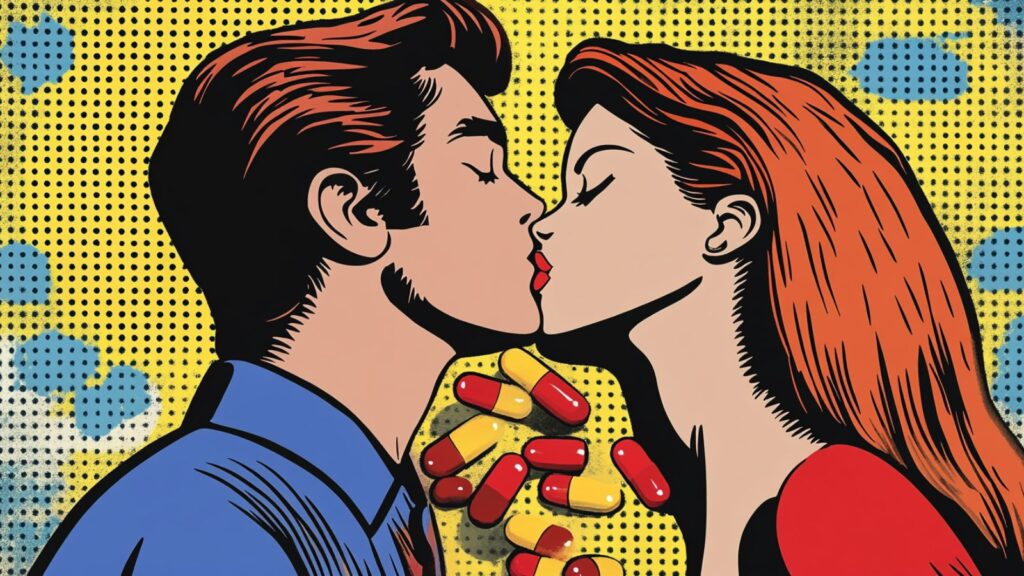The recent boom in interest surrounding ayahuasca and ayahuasca ceremonies has broadened the horizons of many to kambo — the traditional Amazonian medicine secreted by and collected from the giant leaf frog. Kambo is known to produce a variety of physical and mental cleansing effects in its users and boasts a plethora of reported applications for numerous ailments. What is a kambo experience like though? How is it administered, what can you expect after taking it, and is it safe to use with ayahuasca?
About Kambo
What we refer to as kambo is harvested from the Phyllomedusa bicolor frog, native to the Amazon. The frog discharges a defensive poison that is collected and dried before its administration. Kambo practitioners take care to treat their captured frogs delicately. Tying their limbs loosely with straw or twine to hold them in place while the secretion is gathered, they make sure to collect only the first discharge in order to leave the frogs with enough to defend themselves once released.
When the process is complete and the frog is back in its natural habitat, the dried kambo is applied topically to a series of small burns on the skin, usually on the shoulder, but sometimes on the leg or chest. From there, the onset usually takes about 15 minutes.
Kambo should not be ingested orally as this could be fatal or cause complications.
Kambo and the Body
Kambo is taken for its detoxifying effects. It is used to cleanse the spirit and the mind, but perhaps more importantly, the body. Some of its most pronounced and immediate physical side effects are dizziness, increased heart rate, hot flashes, skin tingling, as well as nausea, vomiting, diarrhea and loss of bladder control. For this reason, it is paramount that users take a number of precautions and preparatory steps in the lead-up to the ceremony, very similar to the ayahuasca dieta.
Particular effort should be given to maintaining hydration in the days before taking kambo: drinking enough water (coconut water, herbal tea, etc.) and avoiding caffeine and sugar especially on the day of the ceremony. While it’s best to avoid drinking excessive amounts of water prior to taking kambo, drinking water shortly before it’s administered is recommended in order to facilitate the purging process.
Dieting is also crucial. It’s recommended that users fast for at least 8 hours before a ceremony, and observe a clean and nutritious diet as far in advance as possible. This means avoiding sweets, alcohol and street drugs, dairy products, and spicy foods. Getting plenty of sleep, adhering to a reasonable exercise regimen, and maintaining mental tranquility through relaxation and meditation are all important preparatory steps as well and should not be precluded.
Kambo and the Mind
Within twenty minutes to an hour of the body’s purge, non-hallucinogenic psychoactive effects are commonly reported by kambo users. These experiences are typically characterized by sensations of fatigue and listlessness followed by feelings of mental clarity, euphoria, increased energy, and increased stamina. Kambo has been traditionally used by its indigenous practitioners to increase recipients’ capacity for hunting, and to relieve people of what is referred to as panema.
The term panema generally describes a condition of negativity; dark and unhealthy energy resulting from personal trauma, ancestral burdens, and bad luck. In Western medical terms, this might be better understood as depression and/or anxiety. The kambo afterglow phenomenon that users experience is said to relieve them of guilt and concerns of the past, resulting in pronounced feelings of elevation and vitality. Thus, in addition to its physical cleansing properties, kambo is also used to relieve stress, treat nervous disorders and substance use disorders. It is believed by some to be beneficial in treating a broad range of other afflictions as well, including Alzheimer’s, chronic pain, infections, vascular conditions and hepatitis to name a few.
Kambo and Ayahuasca
Ayahuasca and kambo are both traditional Amazonian medicines and share a number of overlaps in their use across cultures and by peoples in the region. Ayahuasca ceremonies are chiefly spiritual and are traditionally restricted to a shamanic framework. Kambo ceremonies are also traditionally practiced and guided by shamans but are not historically limited to this criteria.
As with kambo, taking part in an ayahuasca ceremony calls for physical and mental formation (observing the ayahuasca dieta, staying hydrated, abstaining from sex, etc.) Purging is also a common after-effect of ayahuasca use, which is one of the reasons why following the prescribed dieta is so important. A key difference however is that the purge accompanying a kambo ceremony is, in essence, the aim, whereas purging under the influence of ayahuasca is more normally thought of as a side effect; to be endured rather than anticipated necessarily.
When kambo is taken in preparation for an ayahuasca ceremony, the accompanying physical and mental cleanse lays a foundation for ayahuasca’s more potent effects. By ridding the body of digestive fluids and bile, recipients experience greater speed and efficacy in their ayahuasca absorption, even when it is administered in much lower doses. This, tied in with the therapeutic after-effects of a kambo cleanse, could mean a safer, smoother and more manageable ayahuasca experience overall.
Taking Kambo Before Ayahuasca
Kambo and ayahuasca should not be taken as part of the same immediate or concurrent ceremony. When offered together, kambo is traditionally administered up to a full day before an ayahuasca ceremony, and never any earlier than several hours prior. This is in order to allow the main physical effects of the kambo to completely subside and to ensure that the two substances do not interact negatively.
With both ayahuasca and kambo, individually or as a pair, it is of the utmost importance that caution and care be exercised in exploring their ceremonial use. Only an experienced practitioner should administer either, let alone both. Look for those who are qualified enough to offer training in their respective applications, who are intimately familiar with their indigenous origins, and who adhere to a thorough screening process.
Anyone pregnant, expecting, currently breastfeeding, as well as those with a history of stroke, blood clots, heart conditions, anyone taking low blood pressure medications, MAOIs or those under the age of 18 should not partake in these ceremonies. Anybody interested in experiencing kambo, ayahuasca, or both, should consult a physician before proceeding.
If you are someone with firsthand knowledge of psychedelics (with experience using ayahuasca in particular), participating in a kambo cleanse as a standalone ceremony first is recommended if you are new to kambo. This is doubly important for anyone without firsthand experience using psychedelics, for whom a kambo ritual could serve as a relatively non-intimidating introduction. It’s advisable that qualified newcomers to either of these experiences explore one without the other before supplementing an ayahuasca ceremony with a kambo cleanse beforehand.
Have you ever prepared for an ayahuasca ceremony with kambo? We want to hear about your experiences, and thoughts, in the comments below!













